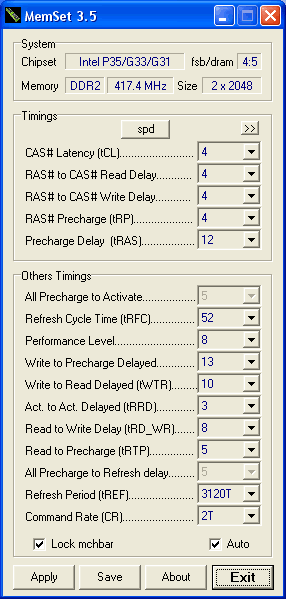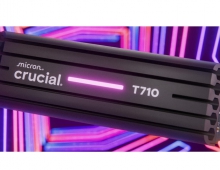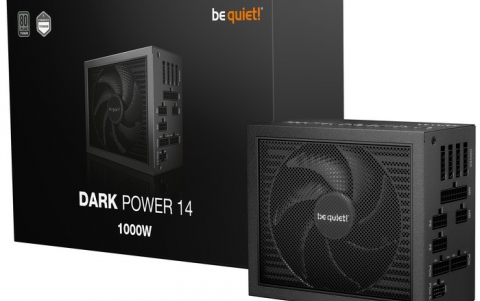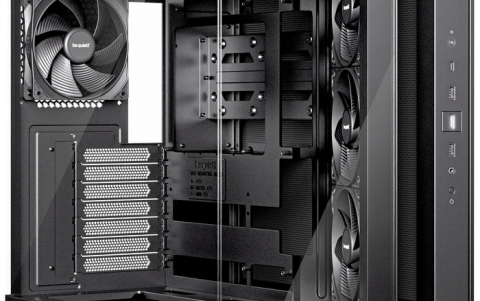Crucial BallistiX Tracer PC2-6400
3. Tests
We used the following PC setup for all the tests
- CPU: Intel E6750 Retail
- Motherboard: Asus P5K Premium BIOS 0702
- PSU: OCZ GameXStream GXS600 SLI-Ready
- VGA: MSI 7600GT Silent (stock memory/core timings)
- HDD: WD 800JB
- OS: Windows XP SP2 with all the latest updates installed
The goal was to check the stability of the modules under various frequencies with the lowest available timings. This is a rather test and trial procedure and the results can vary according to the motherboard and the chipset used. The Intel P35 chipset of our test PC offers a generally good DDR2 compatibility.
Starting from 400MHz, the standard timings are 4-4-4-12. We tried to lower that down to 4-3-3-8 with no success even at 2.20V. We had a totally stable system at 4-4-4-12 with 1.8V.

By changing the FSB:DRAM divider we were able to get higher memory speeds, without affecting the CPU speed. So we reached the 417MHz at CL4:

Another memory divider allows us to go even higher at 445Mhz with CL4

The roof top for CL4 seems to be around 452MHz (with 2.20V memory voltage). To be honest, we were able to push the memory up to 930MHz (465MHz effective speed) by pushing memory voltage to 2.30V, although it is not suggested.

In order to get 500MHz, we must rise up cache latency up to CL5. With 2.20V, we get the promised 5-5-5-18:

Reaching the 1066MHz is very easy with CL5 also (2.20V).

So what we have so far... An 800MHz 2x2GB memory module can easily reach the 1066MHz with stock voltage. How far this memory can go? We are about to find out, by pushing memory voltage up to 2.30V:

The highest stable frequency we got (tested with Prim95 and memtest86+ software) was around 552MHz, aka 1102MHz.





















